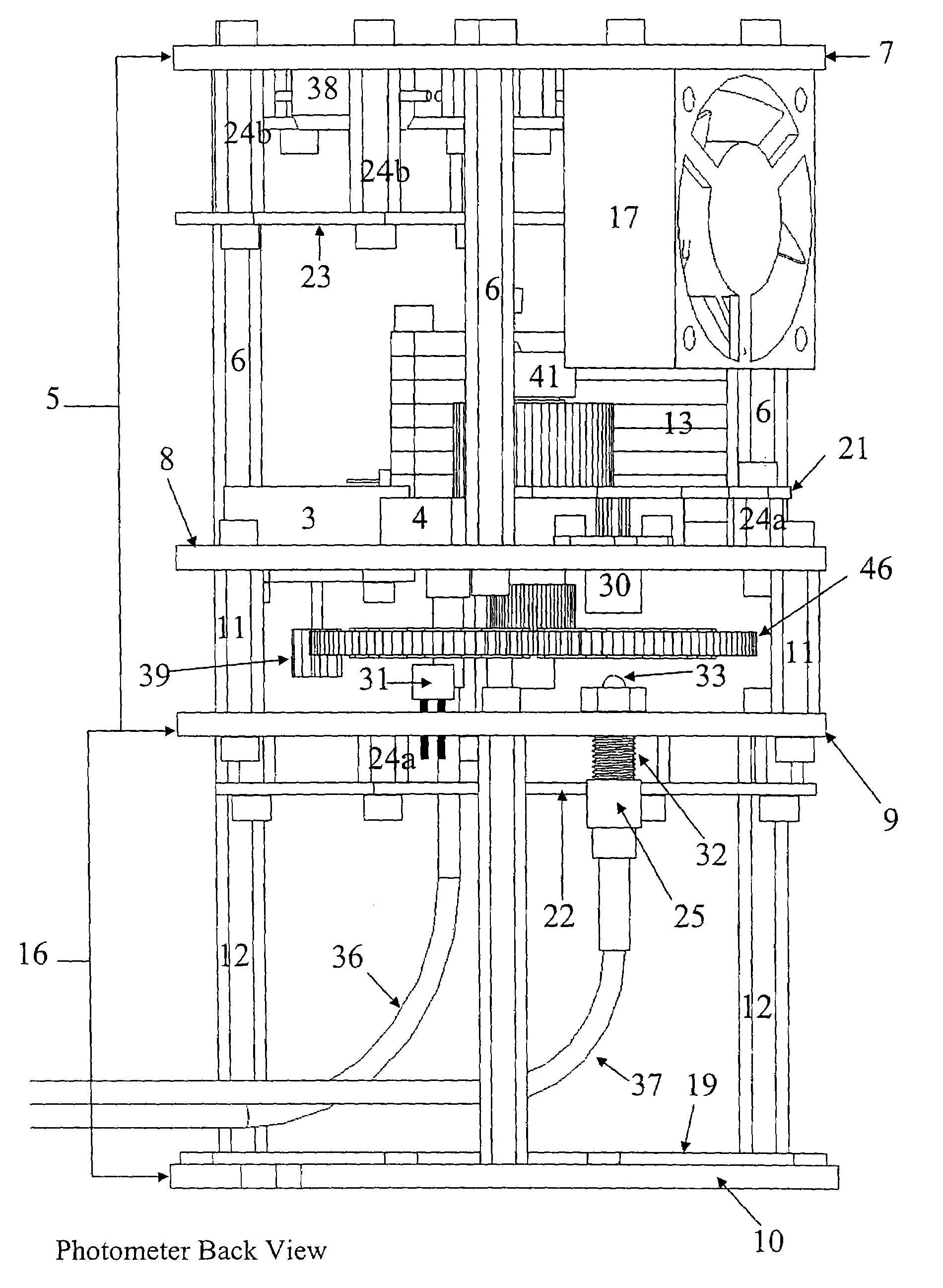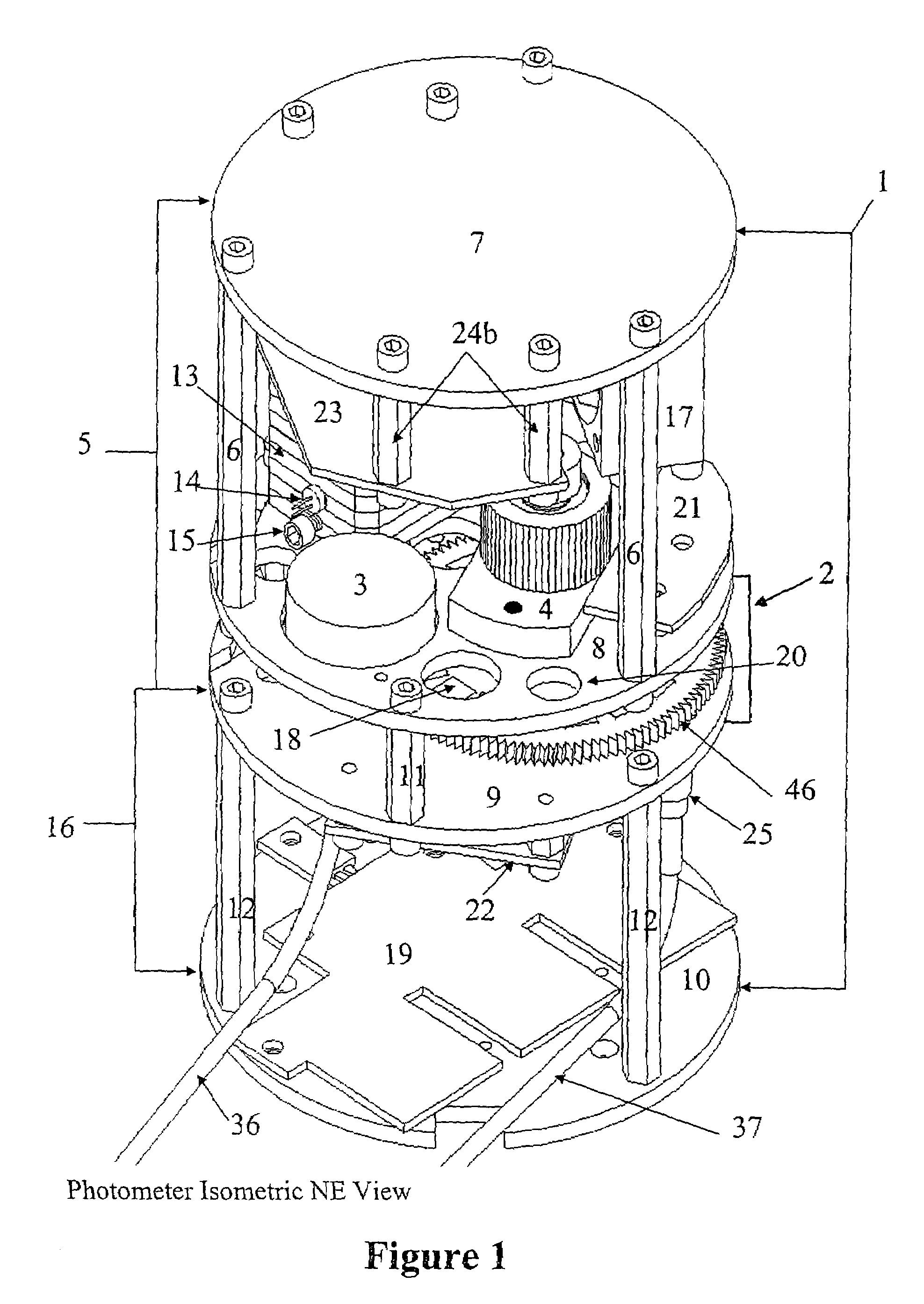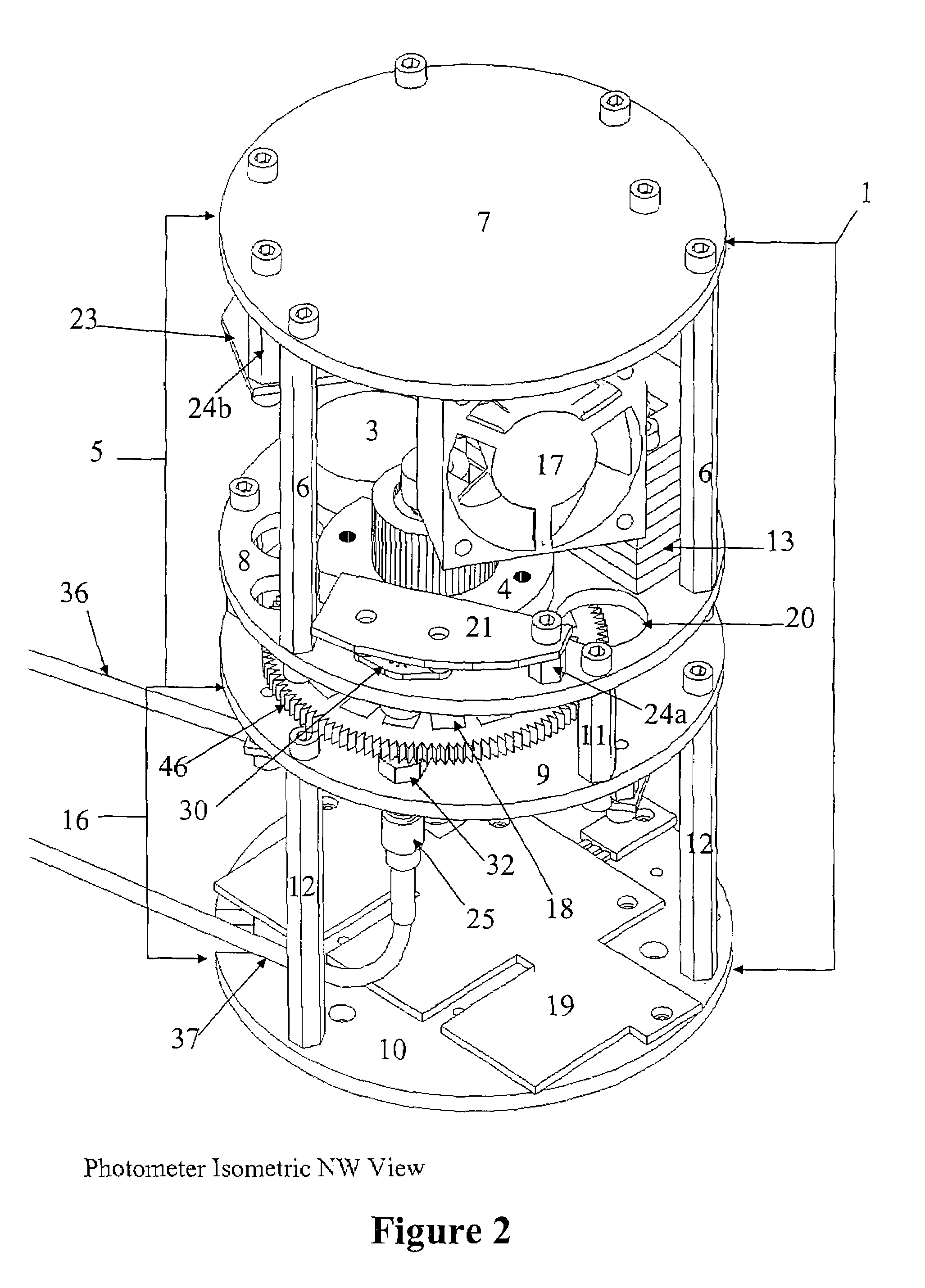Process photometer
a photometer and process technology, applied in the field of process photometers, can solve the problems of increasing the cost associated with the construction and maintenance of the photometer, unable to monitor the production process, and not being able to achieve the desired diversion in many production environments
- Summary
- Abstract
- Description
- Claims
- Application Information
AI Technical Summary
Benefits of technology
Problems solved by technology
Method used
Image
Examples
example
[0056]A device corresponding to that shown in FIGS. 1-9 utilizing the chopped radiation assembly disclosed in Applicants' co-pending application U.S. Ser. No. 10 / 983,404 filed Nov. 8, 2004 was constructed of the materials listed below and housed in an explosion proof ADALET# XIHLDCX Class I Division 1 Groups B,C,D Enclosure.[0057]Filter wheel Assembly 2 was constructed of the following materials:[0058]Bearing housing 4 A housing designed to mount two 0.625 inches (1.588 cm) outside diameter by 0.196 inches (0.498 cm) high bearings spaced 0.163 inches (0.414 cm) apart which is made of aluminum.[0059]Shaft 31 A shaft measuring 0.25 inches (0.635 cm) in diameter and 1.75 inches (4.445 cm) long made of 303 stainless steel.[0060]Set Screw Collar 41 A ring having an inner diameter of 0.25 inches (0.635 cm), an outer diameter of 0.5 inches (1.27 cm), a height of 0.25 inches (0.635 cm) with 6 / 32-thread steel set screw made of aluminum.[0061]Spacer(s) 42a A 0.063 inches long tube with an inn...
PUM
| Property | Measurement | Unit |
|---|---|---|
| temperature | aaaaa | aaaaa |
| resonance frequency | aaaaa | aaaaa |
| resonance frequency | aaaaa | aaaaa |
Abstract
Description
Claims
Application Information
 Login to View More
Login to View More - R&D
- Intellectual Property
- Life Sciences
- Materials
- Tech Scout
- Unparalleled Data Quality
- Higher Quality Content
- 60% Fewer Hallucinations
Browse by: Latest US Patents, China's latest patents, Technical Efficacy Thesaurus, Application Domain, Technology Topic, Popular Technical Reports.
© 2025 PatSnap. All rights reserved.Legal|Privacy policy|Modern Slavery Act Transparency Statement|Sitemap|About US| Contact US: help@patsnap.com



